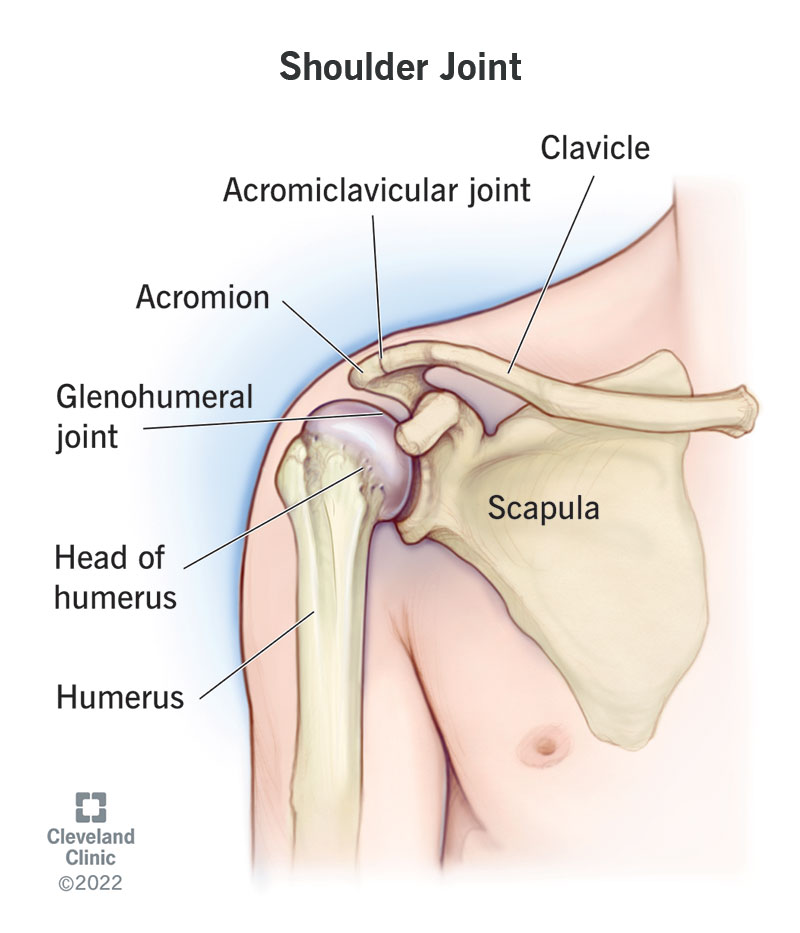Your shoulder joint (glenohumeral joint) is a ball-and-socket joint that connects your upper arm bone (humerus) and shoulder blade (scapula). This lets you move and rotate your arms. It has the greatest range of motion of all the joints in your body.
Advertisement
Cleveland Clinic is a non-profit academic medical center. Advertising on our site helps support our mission. We do not endorse non-Cleveland Clinic products or services. Policy

Your shoulder joint (glenohumeral joint) is where your upper arm bone, shoulder blade and collarbone connect. A joint is a place where the ends of your bones meet.
Advertisement
Cleveland Clinic is a non-profit academic medical center. Advertising on our site helps support our mission. We do not endorse non-Cleveland Clinic products or services. Policy
Your shoulder is a ball-and-socket joint. That means the rounded end of your upper arm bone fits into a curve in your shoulder blade. It moves and spins in many directions. This gives it a greater range of motion than any other joint in your body.
Your shoulder makes it possible for you to:
The joint sits at the top of your arm at the point where your upper arm bone meets the top of your shoulder blade. Other parts of your body work with or support your glenohumeral joint, including your:
Advertisement
Anything that damages nearby bones, muscles or ligaments can hurt your shoulder, including conditions like:
Several conditions can affect your glenohumeral joint. Some common symptoms include:
Your shoulder joint works hard every day. The following suggestions can help keep it going strong:
Your hard-working shoulder joint is why you can do things like share hugs, grab items from high shelves or throw a ball. You can keep your shoulder in working order by eating well and being active. Like all joints, this one can wear out over time. Talk to a healthcare provider if you have symptoms like shoulder pain and stiffness that don’t go away.
Advertisement
Cleveland Clinic’s primary care providers offer lifelong medical care. From sinus infections and high blood pressure to preventive screening, we’re here for you.

Last reviewed on 09/19/2025.
Learn more about the Health Library and our editorial process.